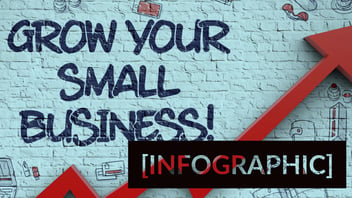A Primer on Creating Brand Ambassadors

I just finished putting the final touches on a presentation I'm giving this week at the 2014 PRSA Midwest District Conference. I'll be there giving a talk about content marketing and how to use inbound to tie PR to sales. (If you're attending the conference be sure to find me and say "hi".) Anyway, as I was going down my checklist of things I need to remember to take to the event, I saw a note I had left myself to ask for a testimonial after my presentation. Asking for a testimonial is one of those things that is easily forgotten and may even make you feel uneasy. Yet if you've done an exceptional job, people are generally happy to give their seal of approval—so not asking can mean missing out on a great endorsement.
I ask for testimonials to lend credibility to my personal brand, but testimonials are obviously beneficial to companies, too. Unfortunately, a lot of brands are inconsistent about asking for testimonials. Even fewer brands have processes in place to ask for and utilize referrals. Every good inbound marketing program should have deliberate processes in place for asking for endorsements and referrals.
One of the things we do at JONES is teach clients how to create brand ambassadors. Our approach to creating brand ambassadors consists of a combination of the following (in ways that makes sense to our individual clients): offering a rewards program, developing a beta customer program and implementing a referral process. Here's a primer on creating brand ambassadors and what we teach clients:
Create and Reward Brand Ambassadors
Creating a rewards program is a good way to encourage actions that support your specific business objectives. Rewards programs should be about benefitting both your brand and the people participating in the program. Depending on your objectives, you can limit the program to your customers or open it up to outsiders.
To make the program beneficial to your brand, think about the outcomes you want to achieve and reward people for completing actions that drive those outcomes. For example, if you are conducting market research and you want people to complete a survey, then reward people for participation. You can reward anything from social media engagement, to demo participation, to renewing a contract. The key is to be strategic about driving the right actions.
To make the program beneficial to participants, offer rewards that are relevant to them. An easy way to do this is to think about the challenges your customers face and choose rewards that solve those problems. Rewards can be points, prizes, discounts or more. Be sure the value of the reward matches the value of the action it drives.
Develop a Beta Customer Program
Utilizing beta testers can help you gain product reviews, customer feedback, case study participation and other insights in return for incentives. To develop a successful beta strategy start by deciding:
-
What you want to receive from beta customers
-
Whether you want to have different levels of beta customers
-
How large or small your program will be (For this you need to consider how many testers you can handle. Also, realize that not all testers will completely participate and provide usable feedback.)
-
What you will do to promote the program
Get Referrals
A Texas Tech marketing study found that 83% of consumers are willing to refer after a positive experience—yet only 29% actually do. You can't just hope satisfied customers will refer your brand, you need to be proactive about getting referrals.
A lot goes into creating a successful referral program. Some of the most important things to focus on are:
-
Educating people about what type of referral you are looking for- People will be reluctant to give you a referral if they don't understand what you do and what type of customers you help.
-
Teaching people how to refer your brand and reminding them to do it - Most of all, make referring easy.
-
Strategically timing requests - Plan requests for when customers are feeling most positive about your brand, for example, right after they've become a customer, during or immediately after an exceptional customer service experience.
-
Promoting, promoting, promoting - Plan how you can promote your program via social media, blogging, email, mobile apps, invoices, and more.
-
Developing messaging for contacting referrals - Referrals are high converting leads. You should approach them differently than other leads. Create messaging specifically for referrals.
If you can implement programs to reward brand ambassadors, allow people to beta test your product, and capitalize on referral opportunities you will undoubtedly drive higher conversions and earn more paying customers.
To learn more about how JONES can develop ambassador generating programs for your brand request a free consultation
-1.png?width=1652&height=294&name=Jones(RGB)-1.png)












